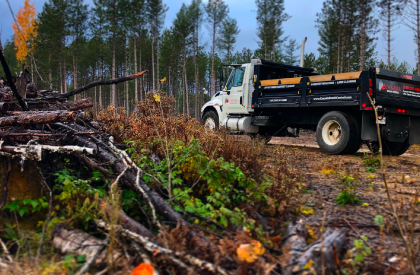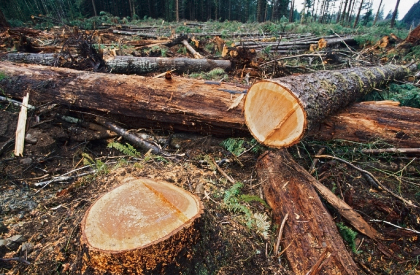

Sustainable forest management is essential for maintaining healthy, resilient ecosystems while preserving the biodiversity and ecological functions of forests. One important practice within sustainable forestry is the management of coarse woody debris (CWD) — the fallen logs, branches, and other large organic material left behind after timber harvesting. While CWD plays a critical role in nutrient cycling and habitat creation for wildlife, its removal can sometimes be beneficial, depending on forest goals and conditions.
When coarse woody debris is removed, the forest floor becomes more open, allowing sunlight to reach the soil and promoting the growth of new seedlings. This can enhance plant diversity, improve regeneration, and support forest health by reducing competition between old growth and new plants. Additionally, removing excess debris can help prevent the accumulation of materials that might fuel wildfires or attract forest pests, such as beetles.
Pest infestations, especially from beetles, pose a significant threat to forest ecosystems. By removing decaying wood and debris, the risk of beetle invasions is reduced, which in turn helps protect the health of the forest. This not only safeguards biodiversity but also mitigates potential economic losses tied to damaged timber resources and disrupted wood supply chains.
Incorporating careful management of coarse woody debris into sustainable forestry practices ensures a balanced approach that supports both forest health and long-term resource availability.
Key Benefits of After Harvest Cleanup
After a timber harvest, removing coarse woody debris—such as logs and cut branches—significantly reduces the risk of beetle infestations that can occur when debris is left behind. Additionally, clearing this debris promotes healthier soil conditions, improving seedling growth and density.
Our team is dedicated to removing all large debris, mulching discarded treetops and branches, and smoothing out any ruts left behind by harvest equipment. This helps minimize erosion risks and prepares the area for the successful establishment of new seedlings.
By clearing the site in this way, we also ensure that tree planters can access the area safely and work efficiently, further enhancing the long-term success of the reforestation efforts.
- Safely removes woody debris
- Reduces the risk of Beetle invacion
- Protects the surrounding forests
- Increases new seedling growth
- Increases plant biodiversity

